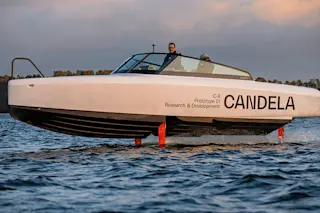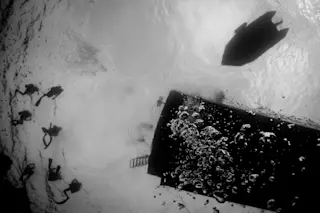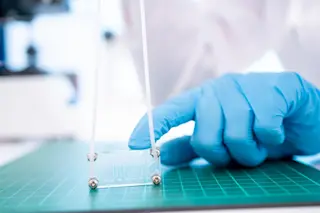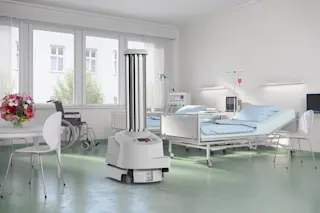At first glance the toy car zipping around Jeff Bloomquist's lab looks ordinary enough. But closer scrutiny reveals something odd. Lashed to a small boom that juts like a bowsprit from the front of the car is a cockroach. Bloomquist, an insect neurophysiologist at Virginia Tech, and Steven Bathiche, now a bioengineering graduate student at the University of Washington, are trying to harness the neuromuscular reactions of insects to control model cars. To what end? They hope to scale up the concept and develop a wheelchair that handicapped people could control with the electrical impulses generated by, say, the twitch of a facial muscle.
In their experiment, the researchers attach an electrode to the muscles the cockroach uses for flying. When the researchers blow air on the cockroach, the slight breeze and the insect's unsupported feet make the roach think it's aloft, so it starts moving its wing muscles. The ...














